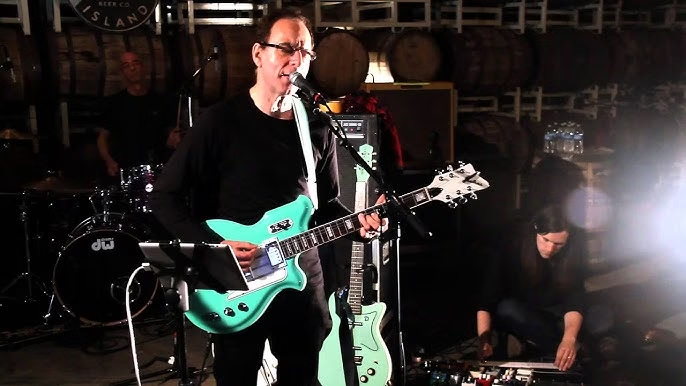Wire: The Architects of Art Punk and Post-Punk Innovation
Wire is an English rock band formed in London in 1976, widely recognized as one of the most influential and forward-thinking bands in the history of punk and post-punk music. Known for their minimalist aesthetics, abstract lyrics, and constant reinvention, Wire played a crucial role in shaping the sounds of punk, post-punk, new wave, art rock, and even electronic and experimental music.
Often described as too punk for art school and too arty for punk, Wire has spent nearly five decades pushing sonic boundaries—never content to repeat themselves, always one step ahead of the curve.

Wire. Formation and Line-Up
- Formed: 1976, London, England
- Classic Line-Up:
- Colin Newman – Vocals, guitar
- Graham Lewis – Bass, vocals
- Bruce Gilbert – Guitar (departed in 2004)
- Robert Gotobed (Robert Grey) – Drums
Matthew Simms joined in the 2010s as a guitarist and electronic manipulator. While Bruce Gilbert left the band officially, the core songwriting duo of Newman and Lewis continues to define Wire’s evolving sound.
Wire. Musical Style
Wire’s sound has shifted significantly through the decades, but core elements include:
- Minimalist guitar textures and jagged riffs
- Tightly structured, often short songs (especially in their early years)
- Cryptic, surreal, and fragmented lyrics
- A balance between cold detachment and explosive energy
- Frequent experimentation with ambient, industrial, synth, and noise music
Their music has ranged from furious punk outbursts to austere electronic meditations, with each album often standing as a reaction against the last.
Wire. Key Albums
Pink Flag (1977)
A revolutionary debut that deconstructed punk before it was fully formed. 21 tracks in 35 minutes—direct, dry, and brilliantly strange.
Highlights:
- “Ex Lion Tamer”
- “12XU” – One of the most iconic punk songs ever
- “Mannequin”
- “Field Day for the Sundays”
- “Reuters” – A bleak, apocalyptic opener
Pink Flag influenced everyone from Minor Threat and R.E.M. to Elastica and Blur.
Chairs Missing (1978)
A darker, more atmospheric follow-up that introduced synths, ambience, and conceptual art rock. It paved the way for post-punk and goth.
Highlights:
- “Outdoor Miner” – Their most melodic and widely loved song
- “Practice Makes Perfect”
- “I Am the Fly” – Angular and unsettling
- “French Film Blurred”
154 (1979)
Named after the number of gigs they’d played by that point, this is Wire’s art-rock masterpiece. Complex, haunting, and sonically adventurous.
Highlights:
- “Map Ref 41°N 93°W” – A cult pop anthem
- “The 15th” – Later covered by Fischerspooner
- “A Touching Display”
- “Two People in a Room”

Document and Eyewitness (1981)
A deliberately confrontational live album of mostly unreleased material—Wire at their most avant-garde, resisting commercial pressures.
The Ideal Copy (1987)
Their first major comeback album after a hiatus. Now embracing synths, samplers, and electronic textures, they helped shape industrial and futurepop scenes.
Highlights:
- “Ahead”
- “Ambitious”
- “Madman’s Honey”
Send (2003)
A heavy, guitar-driven album full of noise and tension, echoing Pink Flag’s rawness with modern force.
Highlights:
- “Comet”
- “Being Watched”
- “Mr. Marx’s Table”
Red Barked Tree (2011)
Melodic yet caustic—a return to the thoughtful art-punk lyricism that made them great.
Highlights:
- “Two Minutes”
- “Adapt”
- “Red Barked Tree”
Mind Hive (2020) & 10:20 (2020)
Critically acclaimed later works showing that Wire continues to evolve, remaining intellectually sharp, musically adventurous, and emotionally engaging.
Signature Songs
- “12XU” – Punk urgency boiled down to its essence
- “Outdoor Miner” – Dreamy pop with cryptic charm
- “The 15th” – Post-punk beauty
- “Mannequin” – Short, sharp new wave anthem
- “Map Ref 41°N 93°W” – Geography as existential longing
Wire. Live Performances
- Wire is known for tight, uncompromising live shows
- They often refuse to play older material, or rework it radically—reinvention over nostalgia
- Their concerts emphasize their artistic seriousness and forward motion
Wire. Influence and Legacy
Wire has profoundly impacted:
- Post-punk and new wave (Joy Division, Gang of Four, The Cure)
- American indie and punk (R.E.M., Hüsker Dü, Big Black)
- Alternative rock and Britpop (Blur, Elastica, Sonic Youth)
- Electronic and industrial music (Nine Inch Nails, Cabaret Voltaire)
Their albums appear on countless “most influential records of all time” lists. They are revered for their artistic purity and refusal to compromise.
Where to Start
| Album | Year | Best For |
|---|---|---|
| Pink Flag | 1977 | Essential punk minimalism and invention |
| Chairs Missing | 1978 | Atmospheric, post-punk beauty |
| 154 | 1979 | Art-rock masterpiece |
| The Ideal Copy | 1987 | Synth-driven, coolly experimental |
| Red Barked Tree | 2011 | Mature, melodic modern Wire |
Final Thoughts
Wire are not just a band—they are a manifesto for forward-thinking music. Their work is proof that rock can be intellectual, minimalist, radical, and deeply expressive, all at once. With each era, Wire has torn up their own rulebook and started again, always a step ahead of their peers and imitators.
If you’re drawn to music that questions structure, challenges comfort, and still delivers endlessly listenable art, Wire offers a discography that rewards deep exploration—start anywhere, but don’t stop.





